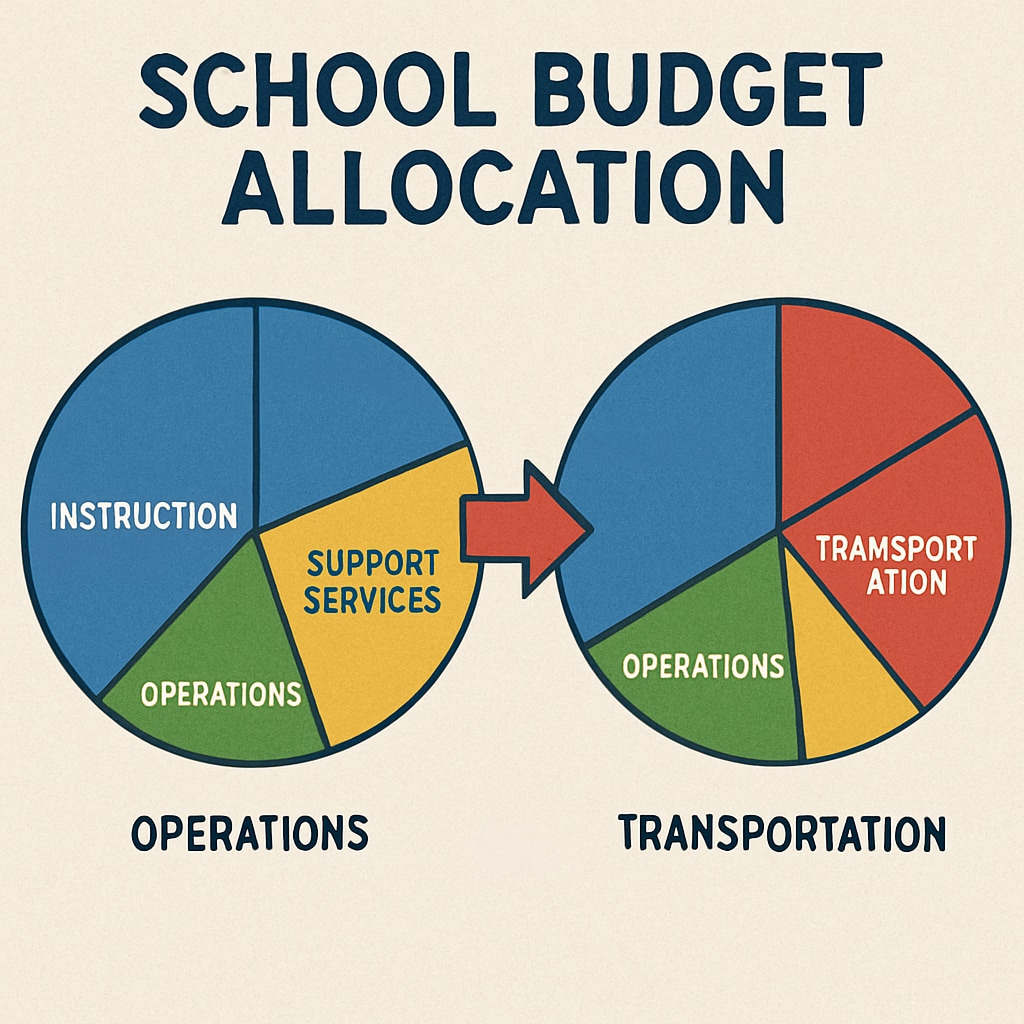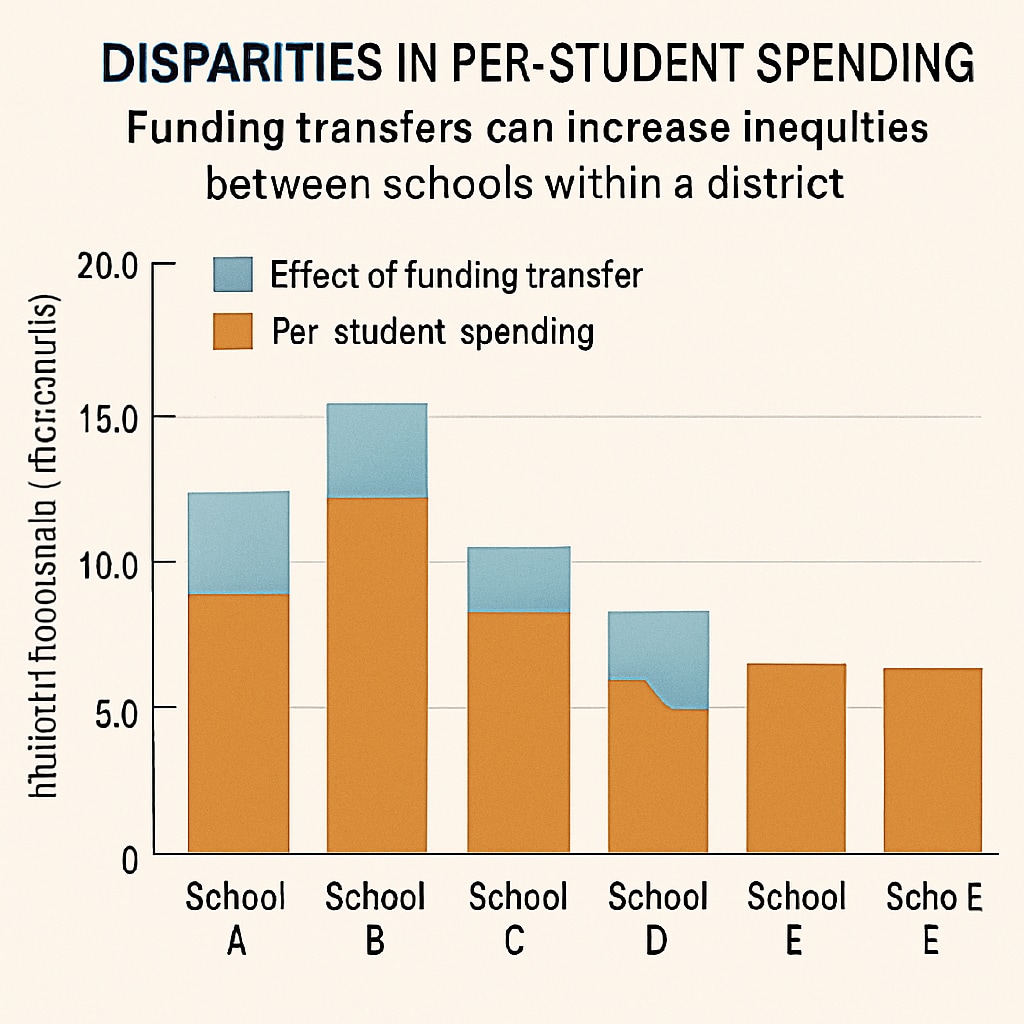In school districts across the country, the use of funding transfers—mechanisms that reallocate funds internally or externally—has become increasingly prevalent. While these transfers can be a legitimate budgeting tool, they also have unintended consequences on key metrics, such as per-student spending statistics. These figures are often used to gauge the adequacy of educational investment and inform policymaking. However, the manipulation of funding transfers can distort these statistics, obscuring the true state of resource distribution. This article delves into the mechanics of funding transfers, their impact on per-student spending data, and the broader implications for educational equity and policy development.

The Mechanics of Funding Transfers
Funding transfers occur when money allocated for one purpose is redirected to another within a school district or passed through external entities. These transfers can take various forms, such as payments to charter schools, contributions to shared services, or interdepartmental reallocations. While intended to address specific needs, they can also create discrepancies in financial reporting. For example, a district may report the transferred funds as part of its overall spending, even if the money does not directly benefit the students within that district.
This practice artificially inflates per-student spending figures, presenting a misleading picture of the district’s financial commitment to its own students. As a result, policymakers and stakeholders may be left with inaccurate data, making it difficult to address systemic funding issues effectively.
How Per-Student Spending Statistics Are Distorted
Per-student spending is a critical metric for evaluating educational investment, but funding transfers can skew these statistics in several ways:
- Inflated Averages: When districts include transferred funds in their spending totals, the calculated per-student amount appears higher than the actual resources available to individual students.
- Unequal Distribution: Transfers often benefit specific schools or programs disproportionately, leaving others underfunded.
- Lack of Transparency: The complexity of funding transfers can make it challenging for stakeholders to track how money is being used and whether it aligns with educational goals.
For example, a district that transfers a significant portion of its budget to charter schools may report high per-student spending figures, even if the majority of students in traditional public schools experience resource shortages. This misrepresentation can lead to misguided policy decisions, such as reducing funding for struggling schools based on seemingly adequate spending levels.

The Broader Implications for Equity and Policy
Funding transfers not only distort financial data but also have far-reaching implications for educational equity and policymaking. When per-student spending statistics are artificially inflated, it becomes difficult to identify and address disparities in resource allocation. This can exacerbate existing inequities, particularly in underfunded districts serving low-income or marginalized communities.
Furthermore, policymakers rely on accurate data to craft effective strategies for improving education. Misleading statistics can lead to the implementation of policies that fail to address the root causes of funding inequities. For instance:
- Resource Misalignment: Misinterpreted data may result in investments in areas that do not require additional funding, while neglecting underfunded schools.
- Reduced Accountability: Districts may use inflated per-student spending figures to avoid scrutiny, undermining efforts to hold them accountable for equitable resource distribution.
- Ineffective Reforms: Misguided policies based on inaccurate statistics can waste resources and fail to improve educational outcomes.
As a result, addressing the issue of funding transfers is essential for ensuring transparency, equity, and accuracy in school finance reporting.
Solutions and Recommendations
To mitigate the negative effects of funding transfers on per-student spending statistics, school districts and policymakers can adopt several strategies:
- Enhanced Transparency: Require detailed reporting of funding transfers, including their purpose, recipients, and impact on local schools.
- Standardized Metrics: Develop uniform guidelines for calculating per-student spending that exclude transferred funds not directly benefiting students.
- Equity Audits: Conduct regular reviews to assess the fairness of resource allocation across schools within a district.
- Stakeholder Engagement: Involve parents, teachers, and community members in budgeting discussions to ensure funds are used effectively.
By implementing these measures, districts can provide a more accurate picture of their financial commitments and work towards greater educational equity.
In conclusion, funding transfers play a significant role in shaping school budgets, but their impact on per-student spending statistics must be carefully managed. Accurate data is crucial for addressing disparities in resource allocation and developing policies that promote educational fairness. As stakeholders become more aware of these issues, they can advocate for transparency and accountability in school finance, ensuring that all students receive the resources they need to succeed.


